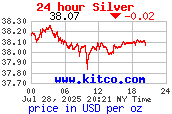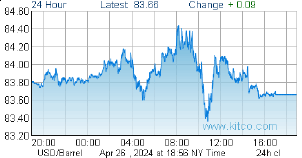CDNX, Gold, The Fed, & U.S. Elections
The CDNX registered its 12th consecutive weekly advance, zooming past its 200-week moving average and overcoming a resistance band between 1900 and 2000 to close Friday at 2009. The 59-point gain for the week means the CDNX has now climbed 49.5% since its early July low, an amazing run that shows no sign of stopping anytime soon. Volume Thursday and Friday was the highest in two months.
The Commodities Super Cycle was only briefly interrupted by the 2008 Market Crash and has really started to pick up steam in recent months. With the Fed actively promoting a lower U.S. Dollar and a more inflationary environment (Helicopter Ben remains all doped up on “quantitative easing”), coupled with continued strong growth in emerging markets such as China, India, Brazil and Russia, the prices of many commodities from Gold to foodstuffs are going to keep charging higher with some parabolic moves possible. We are living in historic times. And the CDNX still has a lot of catching up to do which is one reason we believe the CDNX bull market is only in its early stages. It’s quite conceivable that we could see new all-time highs (3400+) in the CDNX by sometime next year, powered by the masses who have yet to pile in.
The resistance band between 1900 and 2000 that we identified for the CDNX now provides super-strong technical support. The next major area of resistance is between 2250 and 2400 – on several occasions between 2006 and 2008, the 2250 – 2400 area held as critical technical support and the CDNX repeatedly bounced off those levels. In late July/early August, 2008, in the initial days of the Market Crash, the CDNX tried to rally but stopped just short of 2250 and then collapsed from there.
Gold hit a record new high last week of almost $1,400 (it closed Friday at $1,394 for a $34 weekly advance), fueled by a somewhat larger than expected new round of QE announced by the Fed Wednesday and “bullish” comments by Chairman Bernanke in a Washington Post opinion piece: “Lower mortgage rates will make housing more affordable and allow more homeowners to refinance. Lower corporate bond rates will encourage investment. And higher stock prices will boost consumer wealth and help increase confidence, which can also spur spending.”
The Fed is desperately trying to reflate the economy (the stock market as well it appears) and it should get some help from the new dynamics in Congress. In a major repudiation of the Obama Administration’s far left, anti-business, tax “the rich”, big government agenda, Republicans took control of the House of Representatives last Tuesday with a massive gain of seats. They also made gains in the Senate, though the Democrats managed to hold on to a slim majority there.
The Big Battle for 2012 started Wednesday morning and will be played out in dramatic fashion over the next two years. There is likely to be a lot of bickering, finger-pointing and gridlock in Washington over the next couple of years with an ideologically very divided Congress. For this reason there is likely to be little progress in addressing America’s huge debt problem (bullish for Gold). Republicans will block any major social initiatives, but where the two parties can likely find agreement is on stimulative tax measures for both individuals and business (extending the Bush tax cuts for everyone would be a wise idea) to help boost the economy and reduce the high unemployment numbers. Jump-starting the economy will be the focus. The tough and painful decisions required to put the United States on a more sane fiscal path and a stronger foundation won’t come until at least 2012.
Data from the Stock Trader’s Almanac going back to 1833 show that in the third year of a presidential term, shares rally an average of 10.5 per cent. Markets increased in 33 years over the period, and fell in 11. During election years – the fourth year of a cycle – shares rallied an average of 5.8 per cent, with increases 29 times and declines in 15. Politically difficult tasks, such as budget hacking or tax increases, are generally much easier to push through in the first two years of an administration.
Extraordinary market gains seem to come just after mid-term elections. Since 1942, the U.S. market has never declined in the 200 days following a mid-term vote and the average gain over the period has been a stellar 18 per cent.
 BullMarketRun.ca
BullMarketRun.ca







